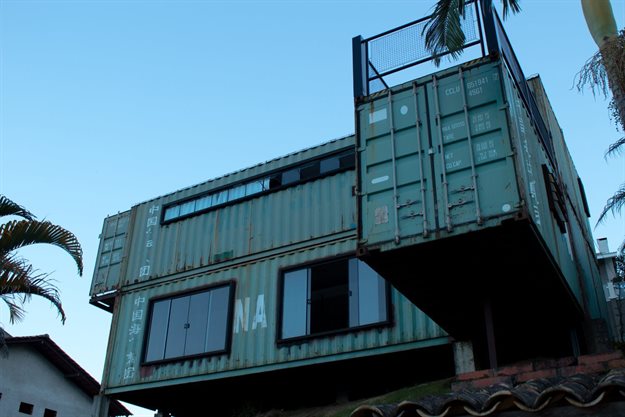
Top stories




Shipping containers certainly offer an interesting alternative to traditional construction techniques, particularly when it comes to affordable living. We’ve already seen some very forward-thinking container solutions going up in places like Maboneng, and I think the opportunity is there to leverage this type of construction for a number of other applications.
Another benefit of container properties is their compatibility with off-grid solutions like solar power, solar lighting and rainwater-harvesting systems. This ability to function without municipal connections makes them an ideal solution for desperately needed rural facilities like clinics and schools.
Building anywhere outside of the normal reach of municipal infrastructure can be very difficult and costly, not only because basic services would need to be installed, but also because transport for construction crews and equipment gets very expensive. The mobile nature of a container, and the fact that it can largely be built offsite, makes it a very smart solution for this type of structure.
With the typical cost of a container home being about a quarter of an equivalent brick and mortar property, shipping containers could also offer a very affordable alternative for RDP housing projects. However, cost is far from the only benefit of using container homes for low cost housing.
Shipping container homes are not just affordable, they’re also dramatically faster to construct, and can normally be built to 90% completion in an offsite factory. That means more homes can be built for the same amount of money, in a shorter period of time, and can be delivered to site virtually complete, minimising the risk for potential vandalism.
Container homes can also be sturdier than cheap brick and mortar construction and (with the right cladding and basic maintenance) can be just as comfortable, stylish and long-lasting as their traditional counterparts.
Shipping containers aren’t just affordable housing alternatives for the needy. High-end container homes have also become popular amongst eco-friendly homeowners looking for a more compact lifestyle.
More and more people, particularly in younger generations, are moving away from the traditional three-bedroom, two-bathroom family home in favour of a smaller space housing just the essentials. Container homes are perfect for this kind of lifestyle, being affordable, compact, eco-friendly and relatively easy to expand down the line. They’re a great option for younger buyers looking to get a foot in the market, or older buyers wanting to downscale.
With their flexibility and unique design aesthetic, shipping containers have also become popular as retail, café and restaurant facilities. New Zealand’s Re:START container mall in post-quake Christchurch led the way, with similar versions soon springing up around the globe (including our very own 27 Boxes in Melville). This type of application isn’t limited to trendy malls in hipster areas, however.
Containers are a great way to introduce marketplaces and social hubs within informal communities, providing safe spaces for small business owners to set up shop. Our current unemployment crisis makes it essential for us to stimulate this kind of entrepreneurial economy, and intelligent use of shipping containers could go a long way towards facilitating that goal.